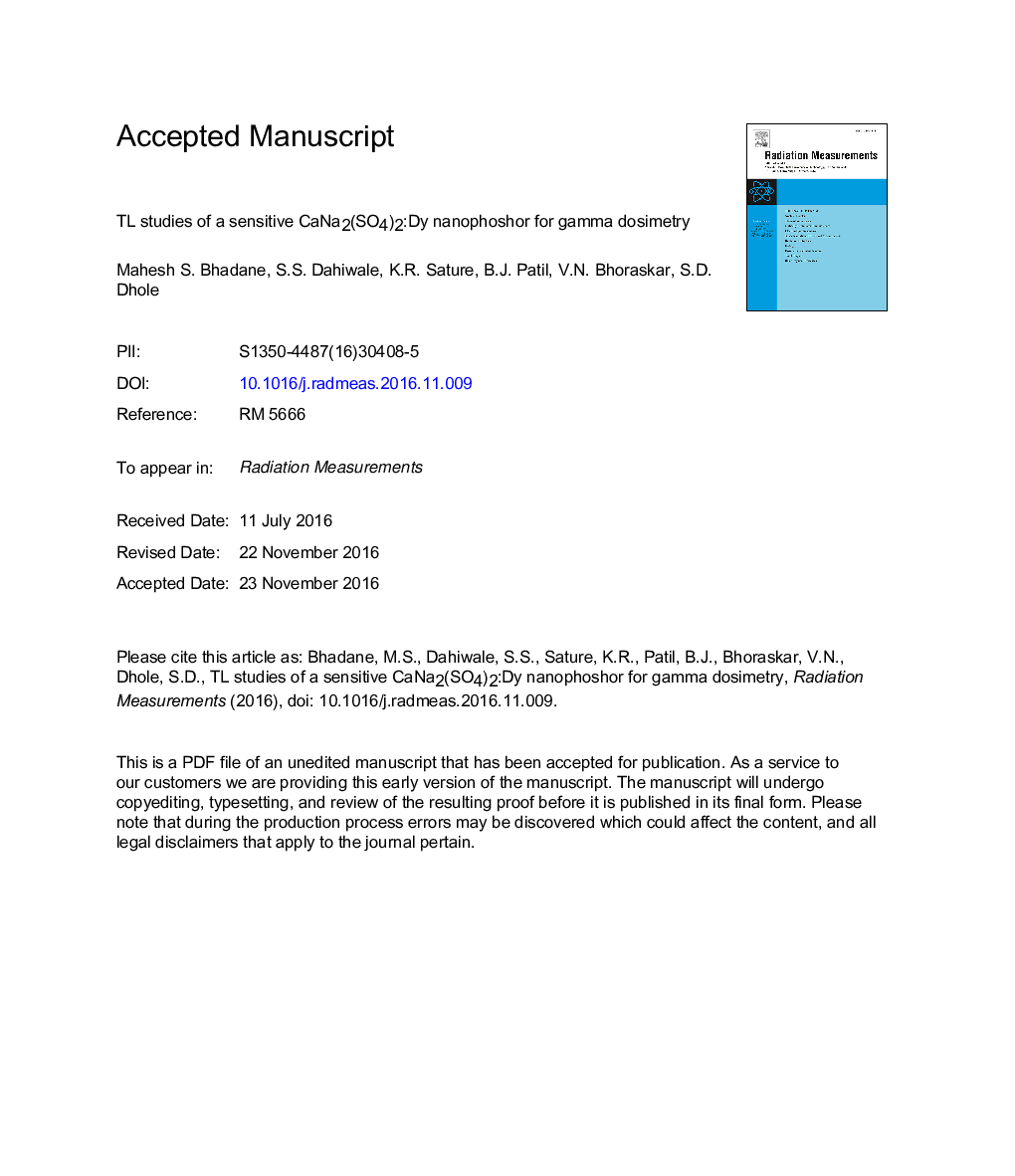| Article ID | Journal | Published Year | Pages | File Type |
|---|---|---|---|---|
| 5498890 | Radiation Measurements | 2017 | 24 Pages |
Abstract
A new Dy doped CaNa2(SO4)2 nanophosphor has been synthesized using simple co-precipitation method and claimed to have good Thermoluminescence (TL) dosimetric properties. Structural, morphological, optical, compound identification and thermal analysis of the nanophosphor was studied by X-ray diffraction (XRD), High-Resolution Transmission electron microscope i.e. (HRTEM), UV-Visible, FTIR and TGA-DSC techniques. XRD studies showed a monoclinic structure and size of the particle found to be around â¼45Â nm. HRTEM confirms the nanosize of the particles of the same order and SEAD pattern shows fringes perfectly match with inter planner spacing distance “d” of XRD i.e. 2.74Â Ã
. UV-Visible and FTIR analysis revealed the absorption wavelength 246 nm which corresponds to the band gap of around â¼5.03 eV and formation of the compounds of different bonds such as S-O, S=O, SO4 stretch, SS disulfide, respectively. The percentage of weight loss-gain, endothermic changes of the nanophosphor was measured using TGA-DSC analysis and corresponding weight loss of such a nanophosphor with increasing temperature was observed around 12.60%. The TL analysis shows that the CaNa2(SO4)2:Dy has a typical single glow curve at 164 °C and gives excellent linear response curve over a wide range of gamma dose from 10 Gy to 10 kGy. Moreover, the reproducibility of the CaNa2(SO4)2:Dy nanophosphor did not change after numerous cycles of exposures and readouts. Fading has been observed at around 9.55% for 30 days. Theoretical analysis of glow curves of samples irradiated by γ-rays was done by computerized glow curve deconvolution (CGCD) method to find out trapping parameters of various peaks. Finally, CaNa2(SO4)2:Dy nanophosphor could be a potential candidate for applications in the field of accidental and reactor dosimetry.
Keywords
Related Topics
Physical Sciences and Engineering
Physics and Astronomy
Radiation
Authors
Mahesh S. Bhadane, S.S. Dahiwale, K.R. Sature, B.J. Patil, V.N. Bhoraskar, S.D. Dhole,
